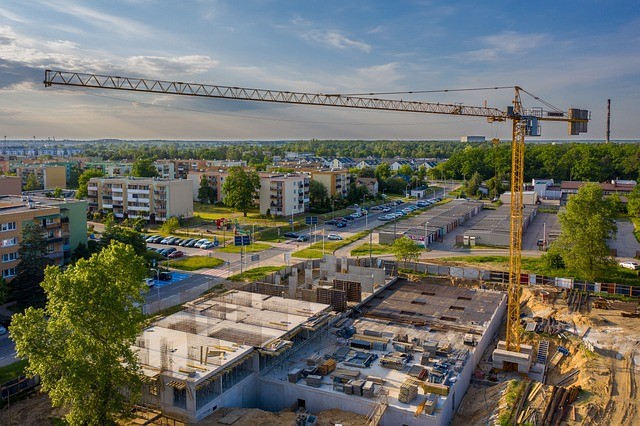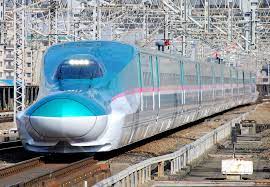
Urbanization, in the Indian context, refers to the rapid migration of people from rural areas to urban centers, driven by various socio-economic factors and the allure of better opportunities. The Indian real estate sector, a vital component of the nation’s economy, finds itself at a critical juncture as it grapples with the transformative effects of urbanization.
In recent years, India has experienced an unprecedented wave of urbanization, with the urban population expected to reach a staggering 600 million by 2030, according to recent reports. This significant demographic shift is creating an insatiable demand for housing, commercial spaces, and infrastructure, driving remarkable growth in the Indian real estate market.
To fully grasp the extent of this transformation, one must understand the multifaceted significance of the urbanization-real estate connection. This synergy not only shapes the skylines of Indian cities but also underpins the economy, job creation, and overall quality of life.
Therefore, comprehending how urbanization impacts the Indian real estate sector is not merely an academic exercise; it is of strategic importance to policymakers, investors, and stakeholders.
Influence of Urbanization on Real Estate Demand
The seismic shift of urbanization in India is set to redefine the dynamics of the nation’s real estate landscape. According to the United Nations, the urban population is projected to increase from 55% in 2018 to 68% by 2050, with an estimated 2.5 billion more people residing in cities by 2050. By 2030, the urban proportion of the world’s population is expected to reach 60%. This demographic wave translates into an unprecedented surge in demand across the real estate spectrum.
As urbanization advances, this demand is vividly visible in the form of an insatiable appetite for housing, commercial spaces, and essential infrastructure. The numbers are staggering: a growing urban population requires millions of new homes, vast commercial spaces, and an extensive modern infrastructure network to support evolving urban lifestyles.
This demand is the lifeblood of the Indian real estate market, propelling it into uncharted territory. It is not only reshaping the geography of Indian cities but also transforming the nature of real estate development. Developers, investors, and policymakers are actively adjusting their strategies to cater to this burgeoning demand, ushering in an era of innovation, sustainability, and affordability.
The surge in demand driven by urbanization is a defining feature of India’s real estate story, and understanding its magnitude is crucial for all stakeholders. It highlights the need for adaptable solutions that ensure sustainable growth, aligning the real estate sector with the aspirations of a rapidly urbanizing India.
Geographic Concentration of Real Estate Demand
In the Indian real estate landscape, geography has become a critical determinant of demand and investment potential. The top seven cities in India – Mumbai, Delhi, Bengaluru, Chennai, Hyderabad, Kolkata, and Ahmedabad – serve as the epicenter of this transformative journey. These urban hubs are not merely driving real estate demand; they are fundamentally reshaping the contours of the Indian property landscape.
Collectively, these cities are expected to account for a substantial 60% share of the nation’s overall real estate demand by 2030, according to recent reports. This concentration reflects their economic vitality, job opportunities, and urbanization trends. Investors and developers keenly observe these cities as the epicenter of growth, understanding that the real estate market in these metropolises is poised for exponential expansion.
For real estate developers and investors, these implications are profound. The focus is shifting towards these strategic urban centers, necessitating a nuanced understanding of local dynamics, market forces, and regulatory environments.
This underscores the need for innovative and sustainable solutions tailored to the unique demands of each city. As the driving force behind India’s real estate resurgence, these cities are not just destinations; they are propelling the industry to new heights, paving the way for a dynamic and prosperous future.
Affordable Housing and Tier 2/Tier 3 Cities
The urbanization wave in India extends beyond mega-cities and is fundamentally reshaping smaller urban centers, particularly tier 2 and tier 3 cities. The demand for affordable housing in these areas has reached unprecedented levels. Recent data indicates a significant influx of population into these cities as urbanization expands its reach.
In tier 2 and tier 3 cities, their role in accommodating this wave of urbanization cannot be overstated. These cities are becoming centers of economic activity, job creation, and improved living standards. Affordable housing is not merely a necessity but a priority, and developers recognize the immense potential in catering to this segment.
However, with opportunities come challenges. Tier 2 and tier 3 cities are experiencing rapid development but also face infrastructural constraints, regulatory hurdles, and the need for urban planning that aligns with their growth trajectory. Balancing affordability with quality and sustainability presents another significant challenge.
The potential in these markets is vast, but success requires a deep understanding of local dynamics, a commitment to responsible development, and collaboration with local authorities to create the necessary infrastructure. In India’s urbanization story, tier 2 and tier 3 cities are emerging as vibrant components, weaving together a narrative of growth, opportunity, and transformation in the real estate sector.
Government Initiatives and Challenges
As urbanization sweeps across the nation, the government has implemented strategic measures to support the real estate industry. These initiatives encompass various aspects of the sector, aiming to stimulate growth, affordability, and sustainability.
Government efforts include substantial investments in infrastructure development, addressing critical gaps in transportation, energy, and connectivity. These investments not only facilitate urbanization but also open new horizons for real estate development.
To address the pressing issue of affordable housing, the government has introduced incentives and policies to promote this sector. Subsidies, tax benefits, and regulatory reforms have encouraged developers to engage in affordable housing projects, aligning with the growing demand in urban and semi-urban areas.
However, challenges loom large in the midst of the urbanization wave. The demand for affordable housing outpaces supply, leading to rising prices and housing shortages. Infrastructure deficits, including inadequate public transportation and urban congestion, pose logistical challenges. Moreover, environmental concerns, such as pollution and climate change, require immediate attention as urbanization intensifies.
While government initiatives are commendable, a collaborative approach between the government and real estate stakeholders is essential to effectively address these challenges. Together, they can chart a course toward sustainable urbanization, ensuring that the real estate sector continues to thrive amid these evolving dynamics.
The future of the Indian real estate sector depends on collaborative efforts between the government and industry stakeholders. Together, they must navigate challenges, innovate, and ensure sustainable growth that aligns with evolving urbanization trends.
The outlook for the sector remains promising, provided that we collectively address challenges and capitalize on the opportunities presented by this monumental wave of urbanization. In unity, we can shape a future where the Indian real estate sector thrives as an integral part of our nation’s transformative journey into urbanization.
![]()




